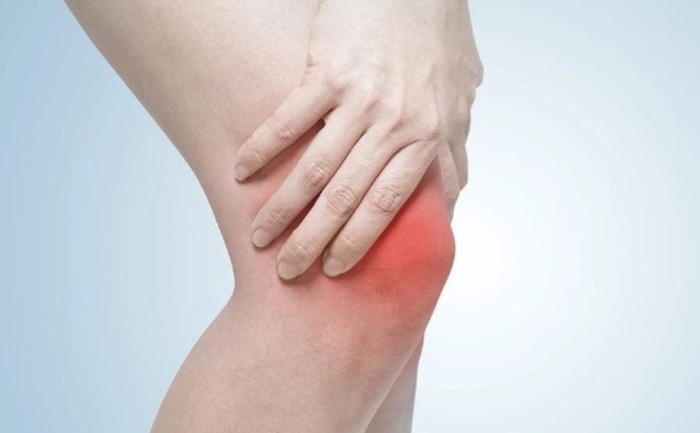Muscle and joint pain are common complaints among many individuals, particularly those undergoing hormonal changes such as menopause or andropause. Hormone Replacement Therapy (HRT) has been a widely debated treatment for alleviating various symptoms of these changes, including muscle and joint pain. In this article, we will explore whether HRT can effectively provide relief for these issues and discuss the mechanisms behind its potential benefits.
Understanding Hormone Replacement Therapy (HRT)
What is HRT?
Hormone Replacement Therapy (HRT) involves the supplementation or replacement of hormones that the body no longer produces in sufficient amounts. In women, this typically refers to estrogen and progesterone during menopause, while men may receive testosterone replacement therapy. HRT aims to restore hormonal balance and alleviate symptoms associated with hormonal deficiencies.
Types of HRT
There are several forms of HRT, including oral tablets, patches, gels, and injections. The specific type of HRT used can vary based on individual health needs, age, and the severity of symptoms. Each delivery method works to restore hormone levels, but their effectiveness and side effects may vary.
Can HRT Help With Muscle And Joint Pain?
Estrogen Deficiency and Joint Pain
Estrogen plays a crucial role in maintaining the health of muscles, bones, and joints. During menopause, when estrogen levels decline, women may experience increased muscle stiffness, joint pain, and even inflammation. Estrogen helps regulate the production of collagen, a protein essential for joint cartilage, and its reduction can lead to a loss of joint elasticity and discomfort.
Testosterone and Muscle Mass
In men, testosterone is vital for maintaining muscle mass and bone density. As testosterone levels decline with age, muscle weakness and joint discomfort can occur. While HRT for men often involves testosterone replacement, it has shown promise in improving muscle strength and reducing associated pain by restoring optimal hormone levels.
The Role of HRT in Alleviating Muscle and Joint Pain
Improvement of Joint Function
Several studies have suggested that HRT, particularly estrogen therapy for women, may improve joint function by promoting cartilage health. Restoring estrogen levels helps to counteract the degeneration of joint cartilage, potentially easing pain and stiffness. Research has indicated that estrogen replacement may reduce the severity of osteoarthritis symptoms, a common cause of joint pain in post-menopausal women.
Reduction in Inflammation
Inflammation is a key contributor to muscle and joint pain. Estrogen is known to have anti-inflammatory properties, and its replacement through HRT may help reduce chronic inflammation that often accompanies conditions like rheumatoid arthritis. By restoring hormonal balance, HRT may decrease the inflammatory markers in the body and alleviate related discomfort.
Muscle Strength and Mass Enhancement
For both men and women, HRT has the potential to improve muscle strength by restoring hormone levels essential for muscle growth and repair. This can help reduce muscle weakness and associated pain. Testosterone replacement in men, for instance, has been shown to promote muscle regeneration, increasing overall strength and potentially reducing the risk of injuries that result from weakened muscles.
The Potential Side Effects of HRT
Risks and Side Effects for Women
Although HRT may provide relief for muscle and joint pain, it is not without potential side effects. Some women may experience breast tenderness, bloating, or mood changes as a result of estrogen supplementation. Additionally, long-term use of HRT has been associated with an increased risk of blood clots, stroke, and certain types of cancer, which should be carefully considered when determining whether HRT is appropriate.
Side Effects for Men on Testosterone Replacement
For men undergoing testosterone replacement therapy, common side effects may include acne, sleep apnea, and mood swings. Additionally, long-term testosterone therapy could lead to reduced fertility and an increased risk of cardiovascular problems. It is crucial for men to undergo regular medical monitoring while on HRT to assess the treatment’s effectiveness and potential risks.
Alternative Treatments for Muscle and Joint Pain
Physical Therapy and Exercise
While HRT can be effective for relieving muscle and joint pain, other treatments should also be considered. Physical therapy, regular exercise, and stretching can help strengthen muscles, improve flexibility, and reduce pain. These interventions complement HRT by promoting overall musculoskeletal health.
Diet and Supplements
Certain supplements, such as glucosamine, chondroitin, and omega-3 fatty acids, are often used to support joint health and reduce inflammation. A balanced diet rich in calcium, vitamin D, and protein can also help maintain bone and muscle health. Combining HRT with these additional strategies may provide more comprehensive relief for muscle and joint pain.
Consultation with a Healthcare Provider
Personalized Treatment Plans
Before beginning HRT, it is crucial to consult with a healthcare provider who can assess an individual’s specific health needs and risks. A healthcare professional will consider factors such as age, overall health, and pre-existing conditions when recommending HRT or any alternative treatments. Regular monitoring is essential to ensure the treatment’s effectiveness and to adjust dosages as necessary.
Long-Term Monitoring and Maintenance
HRT is not a one-time solution. Long-term follow-up is needed to ensure that the treatment is delivering the desired results and to detect any potential side effects early. Healthcare providers will work with patients to adjust therapy as their needs change over time.
Conclusion
Hormone Replacement Therapy has shown potential in alleviating muscle and joint pain, especially for individuals experiencing hormonal imbalances related to menopause or andropause. While it can offer relief, it is not without its risks, and a careful evaluation by a healthcare provider is essential. A comprehensive approach that includes HRT, physical therapy, and proper nutrition may provide the best outcomes for managing muscle and joint discomfort. Always consult with a healthcare professional before starting any treatment.
Related articles:
- Can HRT Help Lichen Sclerosus?
- How Does HRT Work To Treat Migraines?
- Is Nuvaring Safe For Women Over 50? A Comprehensive Guide


